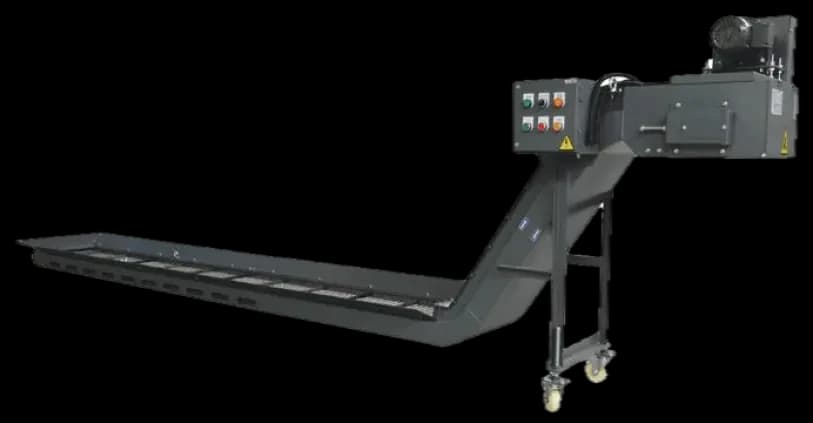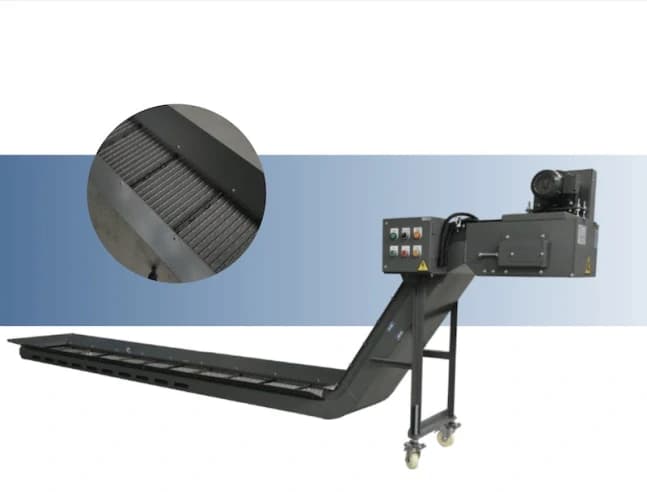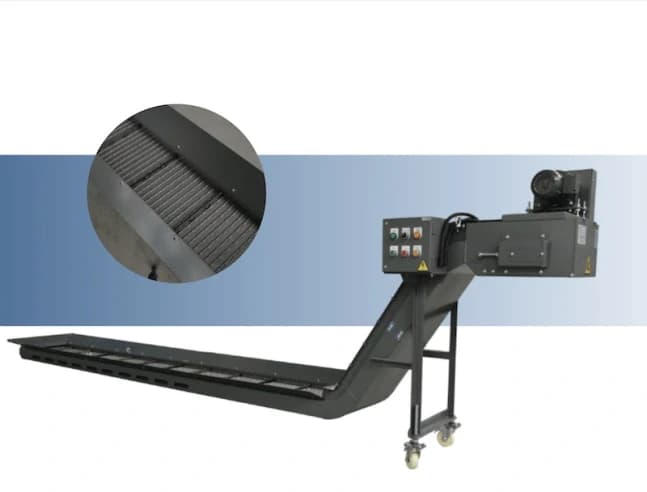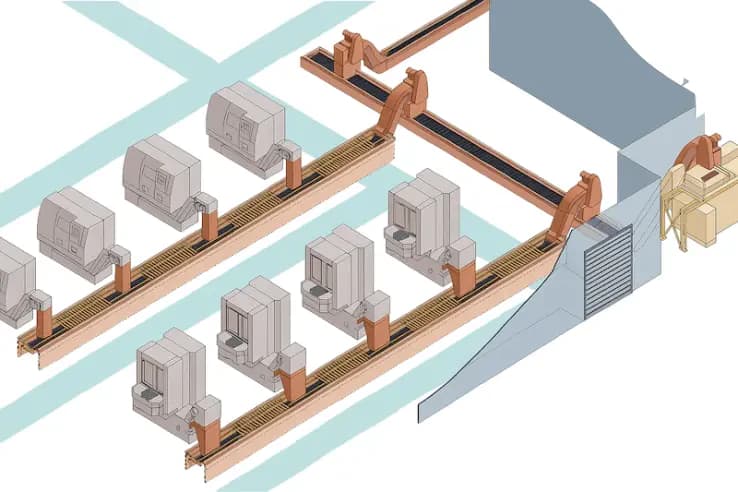
Explore our Chip Conveyor solutions – a complete range of systems for automatic chip removal in CNC machining and other applications. From hinge-plate and scraper conveyors to magnetic and filtration-integrated systems, this catalogue helps you choose the right equipment for stable chip evacuation, cleaner coolant and safer, more efficient production.

CA$8,496.52 excl. taxes

CA$9,505.11 excl. taxes

CA$9,745.09 excl. taxes

Chip conveyors are an essential part of modern machining, providing continuous removal of metal chips, swarf, offcuts and other process waste from CNC machines and production lines. A properly selected conveyor protects equipment, stabilizes cutting conditions and helps maintain a safe and clean work environment on the shop floor.
A chip conveyor is an automatic system designed to collect chips directly from the machine enclosure and transport them to a discharge point, chip bin or central handling system. Instead of manually shovelling swarf, operators can rely on a mechanical device that runs in parallel with the machining process and removes waste continuously.
Depending on the design, chip conveyors are used with turning centres, machining centres, grinders, drilling machines and even woodworking equipment. Systems can be standalone units installed beside a machine or integrated solutions forming part of a larger chip and coolant handling layout.
Different machining operations and chip forms require different conveyor concepts. The most common designs used in metalworking include the following.
Hinge plate (hinge belt) conveyors are designed for long, stringy chips, coiled swarf and mixed metal chips. A robust steel belt made of interlocking plates is driven by a chain, carrying chips along the trough and up the incline section to the discharge point. Plate pitch, plate thickness and belt width are selected according to chip load and machine size.
These conveyors are widely used on CNC lathes, horizontal and vertical machining centres, and other machines where heavy chip volumes are generated during turning and milling.
Scraper conveyors are ideal for short chips, fine particles, cast-iron dust and applications with high coolant flow. Scrapers move along the bottom of the trough and push chips towards the discharge, even when the material is granular or settles at the bottom. Different scraper spacing and trough geometries allow the system to be matched to the required capacity and footprint.
Magnetic conveyors use internal magnet assemblies moving under a stainless steel sliding plate. Ferrous chips and small parts follow the magnetic field and are transported without mechanical flights. This design offers low noise, low wear and is particularly suitable for cast iron and steel machining where a compact, leak-tight solution is needed.
In many real-world applications, chip geometry changes from one job to another. Combination and wedge-scraper designs help to handle a wide spectrum of chip types, from short broken pieces to loose bundles. Such conveyors are often used in multi-axis machines and flexible machining cells where reliable transport under varying conditions is required.
For demanding machining operations, chip removal and coolant purification are combined into one system. Chip conveyors can be paired with drum filters, paper-band filters, magnetic separators and backwash filtration units. In this configuration, chips are separated and discharged while coolant is filtered and returned to the tank, supporting stable machining conditions and extended coolant life.
When selecting a chip conveyor, it is important to consider both the mechanical design and the process parameters. Key aspects include:
Chip conveyors from this catalogue can be found in many sectors, including:
Systems can operate as individual units on a single machine or as part of a centralized chip and coolant handling system serving multiple machines with common discharge and filtration equipment.
Chip conveyors offered in this category cover a broad range of standard sizes and layouts, and can also be adapted to suit specific machine models or production tasks. Typical options include:
Long experience in conveyor engineering allows the manufacturer to support projects ranging from single-machine upgrades to complete chip handling systems for entire production lines.
By equipping your CNC machines with the right chip conveyor, you improve reliability, reduce manual cleaning work and create a safer, more efficient production environment.
The right choice depends on chip material, chip shape, coolant flow and available installation space. Hinge plate designs work well for long, coiled chips, scraper conveyors for short and fine chips, and magnetic designs for ferrous materials where a sealed construction is preferred. For mixed chip forms or very demanding applications, combination or filtration-integrated systems may be the best solution.
Yes. Many systems are designed to operate fully submerged in coolant and can be combined with filtration units. In such layouts, the conveyor transports chips to the discharge point while coolant passes through filters and is returned to the tank with reduced contamination.
Conveyors remove hot, sharp chips from the machining zone automatically, reducing manual handling and the risk of slipping on chip piles. Cleaner machine interiors and coolant tanks also help protect seals, pumps and other components from premature wear.
Yes. Conveyors are available in multiple sizes and layouts and can be matched to a wide range of CNC lathes, machining centres and grinding machines. Dimensions, discharge heights and interfaces can be selected so that the conveyor integrates correctly with the machine base and coolant system.
In many cases, older machines can be retrofitted with modern conveyors or connected to central chip and coolant handling systems. When planning such an upgrade, it is important to review chip volumes, coolant conditions and available space so that the new equipment fits the existing layout and provides the desired performance.